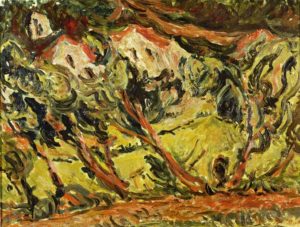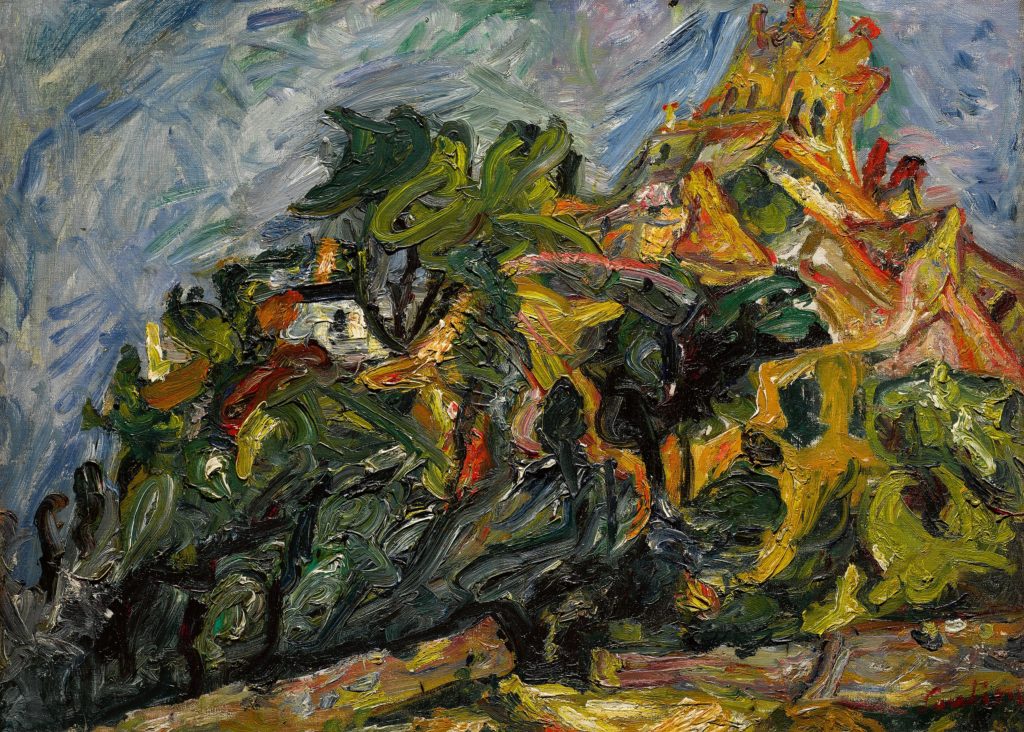“Immortal Thoughts: Late Style in a Time of Plague” (Thames & Hudson Ltd, $21.95) is a book about the art of painting and the life of the artist.
It’s about aging, decaying, dying, and the stubborn tenacity of the creative urge.
Author Christopher Neve, a British artist and writer (“Unquiet Landscape: Places and Ideas in 20th-Century British Painting,” [Thames & Hudson Ltd, 2020]) was spurred by the COVID-19 lockdown, his own increasing age, and his sense that the earth itself might be dying.
To ride out the pandemic, he returned to his isolated childhood home in the British countryside. He gazed upon the flowers, trees, and birds he loves, knowing that one day this particular countryside will be no more, and knowing, too, that his appreciation was sharpened by this very ephemerality.
Could it be, he began to wonder, that many artists produce their ripest, most innovative, most profound work in their last years?
Is it worth taking a second look at art by people who have already peaked in the eyes of the world; who have become weakened physically, emotionally, and perhaps even mentally, and yet are still painting, drawing, sculpting, growing?
He compiled “Immortal Thoughts” in 2020, interspersing his profiles with ruminations on COVID’s terrifying global spread. He reflected on the last years and works of Poussin, Constable, Pisarro, El Greco, Chardin, Morandi, Rouault, and Chaim Soutine, among others.
I first came across Soutine at the Barnes Foundation in Philadelphia and instantly fell in love. A Lithuanian-born Jew who made his way to Paris, his life, personal hygiene, finances, romances, and health were a perpetual mess. He died in agony of stomach cancer at 50, basically fleeing from the Nazis.
You don’t have to have a degree in art history to appreciate “Immortal Thoughts,” which includes 29 high-quality color illustrations.
Neve isn’t a critic of art; he’s a lover of art, and a lover of the people who make it — Soutine chief among them.

He’s also one of those people who have followed a passion — in his case, painting — but excel as well at another.
His writing is gorgeous, not only because of the beauty of the prose, but because he has taken the time to enter, as much as possible, into the hearts of the painters he profiles: their terrible losses, their isolation and loneliness, their physical frailty and, in many cases, their poverty.
He sets forth their biographies — not the typical critic’s list of exhibits and descriptions of how this or that work was restored, but the stuff you really want to know: their failed marriages, dead children, arguments with neighbors, stays in mental institutions. Their dogged daily return to the studio in spite of it all, the nearly insane drive by which they stay at their watch till the end. The memory, intuition, and dreams he imagines them using to create what he often sees as their best work even as they’re dying.
“In talking about Soutine’s last paintings,” Neve writes, “I need to discuss the idea of risk. Risk in painting is characteristic of many artists’ last work. … That is because they knew far too much to be held up by technical difficulties and because it no longer mattered to them very much what patrons and buyers might expect.”
“In Soutine’s case extreme anxiety and angst are part of his method of inner expression turned outwards, his way of making something his own by realizing it in a system of energetic marks. … To get in touch with your inner genius you act now, this very moment, on impulse and exactly true to your own nature. … This energetic ardour, an uncontrolled appetite for paint and life, can produce out of violence and disorder and profound anarchy an occasional truth, the truth he first imagined as if by accident.”
Of another, earlier artist, he observes:
“Very soon it will be February 8th, 1564 [the day Michelangelo died]. Do not attempt to guess what is running through Michelangelo’s head in these last five drawings.
“All are of the crucifixion. Four include Mary and Saint John. Each drawing is blotched and marked, full of revisions, alterations, corrections, and patently incomplete. In two the vertical of the cross has been changed using a ruler, apparently at a late stage, to a slight tilt, the better to express the dead weight of the body. For in these drawings Christ is dead. … Mary and John are in despairing attitudes. … Their feet heavily grip the ground and their clothes are either absent or so rudimentary as to accentuate their nudity by wrapping round it. The body of Christ himself is beautiful beyond all belief, full of hollows, the agonized muscles of the chest and stretched stomach, which are at the centre of each drawing, conveyed miraculously by a sort of smoke of changing indication within the form.”
“Do not say: This is drawing by an old man’s shaky hand. For it is drawing by one of the greatest sensibilities there has ever been, at its wits’ end.”
Neve lavishes the same depth and care on all his subjects. Would that we aim toward immortality in our own “late style” — however and whenever that comes.

